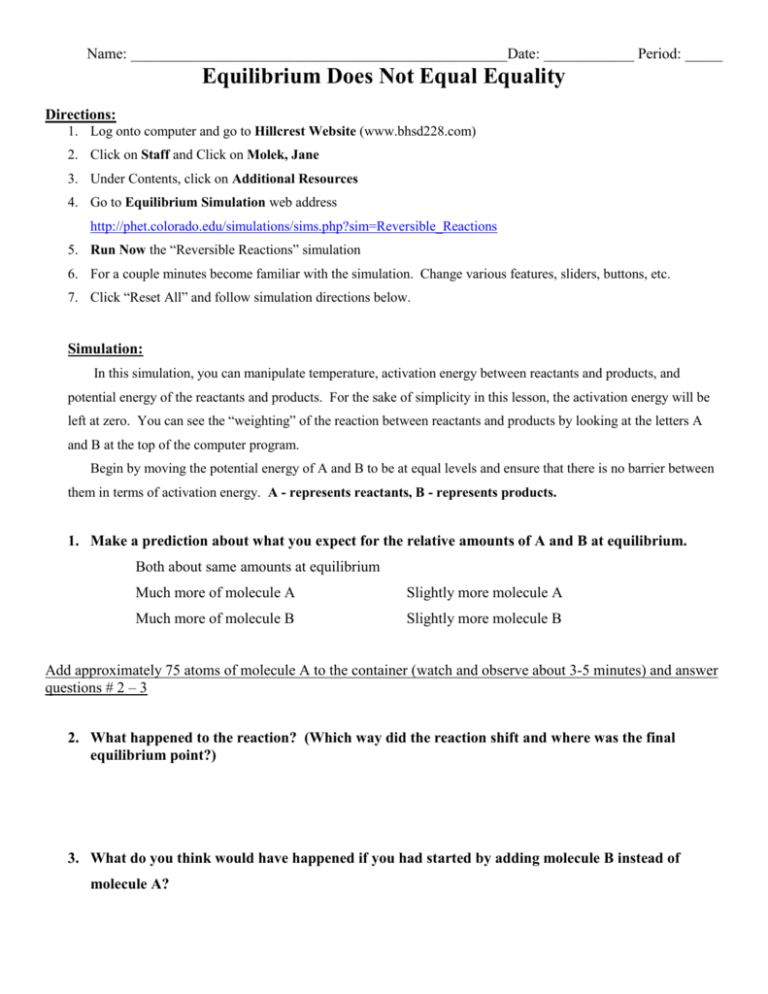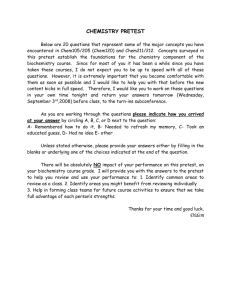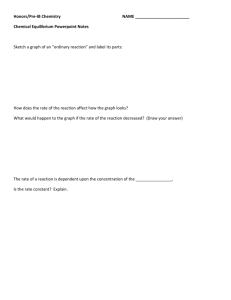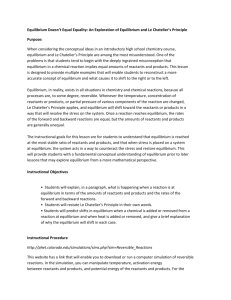Equilibrium Does Not Equal Equality
advertisement

Name: __________________________________________________Date: ____________ Period: _____ Equilibrium Does Not Equal Equality Directions: 1. Log onto computer and go to Hillcrest Website (www.bhsd228.com) 2. Click on Staff and Click on Molek, Jane 3. Under Contents, click on Additional Resources 4. Go to Equilibrium Simulation web address http://phet.colorado.edu/simulations/sims.php?sim=Reversible_Reactions 5. Run Now the “Reversible Reactions” simulation 6. For a couple minutes become familiar with the simulation. Change various features, sliders, buttons, etc. 7. Click “Reset All” and follow simulation directions below. Simulation: In this simulation, you can manipulate temperature, activation energy between reactants and products, and potential energy of the reactants and products. For the sake of simplicity in this lesson, the activation energy will be left at zero. You can see the “weighting” of the reaction between reactants and products by looking at the letters A and B at the top of the computer program. Begin by moving the potential energy of A and B to be at equal levels and ensure that there is no barrier between them in terms of activation energy. A - represents reactants, B - represents products. 1. Make a prediction about what you expect for the relative amounts of A and B at equilibrium. Both about same amounts at equilibrium Much more of molecule A Slightly more molecule A Much more of molecule B Slightly more molecule B Add approximately 75 atoms of molecule A to the container (watch and observe about 3-5 minutes) and answer questions # 2 – 3 2. What happened to the reaction? (Which way did the reaction shift and where was the final equilibrium point?) 3. What do you think would have happened if you had started by adding molecule B instead of molecule A? Change the energy level of molecule A so that it is higher than that of molecule B. Also adjust the heat control and then add more of molecule B to the reaction vessel (watch and observe about 3-5 minutes) 4. Make a prediction about what you expect for the relative amounts of A and B at equilibrium. Repeat the experiment and answer questions # 5 – 7 5. What happened to the reactions? (Which way did the reaction shift and where was the final equilibrium point? 6. What happens to the molecules in the container when it is heated? How does this affect the final equilibrium ratio? 7. What happened to the equilibrium when more of compound B is added to the container? Summary Questions: 8. Write LeChatelier’s Principle and then restate the concept in your own words. a. Definition: b. Your own words: H2 (l) + heat ⇔ H2O (g) 9. Fill in the chart: Change/Stress on System Direction of Shift Reason for Shift Adding heat Adding water vapor Removing water vapor Decreasing temperature Increasing pressure 10. Using the following reactions, fill in the table below. 12.6 kcal + H2(g) + I2(g) ⟺ 2HI(g) Stress Equilibrium Shift H2 I2 HI __________ Decrease Increases right, left, none 1. Add H2 right 2. Add I2 __________ 3. Add HI 4. Remove H2 5. Remove I2 6. Remove HI 7. Increase Temperature 8. Decrease Temperature 9. Increase Pressure 10. Decrease Pressure ___________ ___________ __________ ____________










